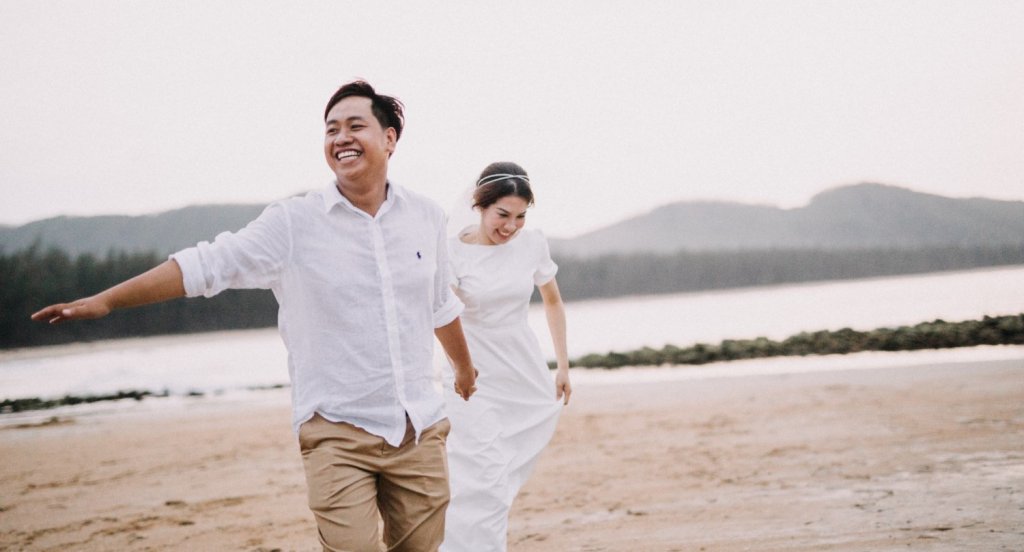Engagement Ring Statistics You Should Know
Key Takeaways
- It’s normal to want to know what other people are buying – and, for that matter, where other shoppers’ priorities lie – when it comes to the world of engagement rings and bridal jewelry.
- The United States sits higher than any other country when it comes to spending money on an engagement ring, with an average price tag falling around the $6,000 mark.
- Fittingly, the United States is also investing in larger diamonds than shoppers in any other country, on average. 1 carat is seen as the norm here, though plenty of shoppers like to go above (or below) that weight.
- On average, men and women not only have different priorities when it comes to the ring, but also the proposal itself.
- While we would never recommend it to anyone, around 1 in ten engagement rings feature a rare FL or IF diamond.
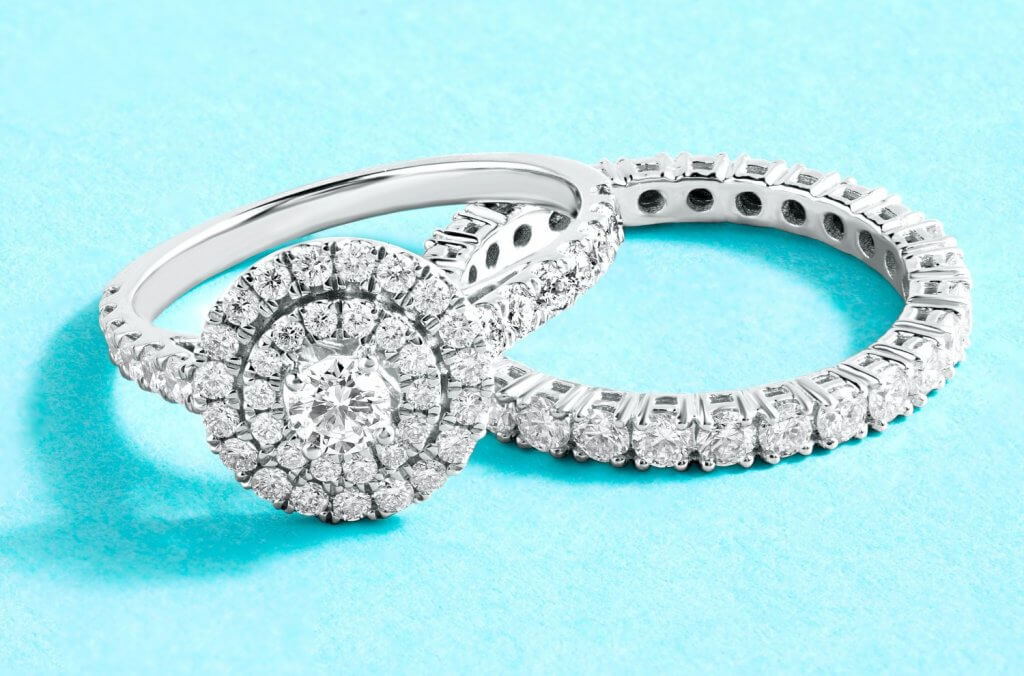
Here’s something no one warned you about when you first let your closest confidantes in on your plans to propose: buying an engagement ring naturally means a certain amount of ‘peeping over the garden fence’, so to speak, and trying to work out what everything else is doing.
And why not? For someone who hasn’t put much – if any – thought into engagement rings, diamonds, proposals, jewelers, and carats ever before, it’s only natural. It’s like being handed a test you haven’t studied for, and that feeling of wanting to peer around at everyone else for some sign that they’re as bewildered as you.
The only difference is, this time around, you’re not trying to impress the teacher – you’re working to impress your partner, all of their expectations, and those of every friend, family member, coworker and stranger who catches a long glimpse at the ring from here to, well…ever after.
We can talk about halos, cathedrals, peekaboos, and paves until you could pretty much do our job for us, but, even then, there will always be an element of wanting to side-eye your neighbor’s test paper.
In other words, you want to know what’s going on outside your bubble. What are the expectations for money, size, sparkle, and color? Where is everyone else shopping? Where are people sourcing their diamonds from?
For that reason, here are our favorite statistics from across the world of engagement rings that will help frame your search…
Money
Plenty of people will tell you it doesn’t matter what you spend – all that matters is that you’re the guy proposing, and she’s the one saying yes – and it’s true. Budgets come in all sizes – some average, some below average, and others that are pretty much capable of buying out an entire jewelry store.
But the fact that it’s true doesn’t help you ‘find your feet’ when it comes to making a budget. It’s nice to know that your $8,000 doesn’t make you less of a romantic than the guy with $80,000, but knowing that fact alone won’t help you pin down your $8,000 to begin with.
With that in mind, here are the statistics you need to know:
- The Average Cost of an Engagement Ring in the US is around $6,000…
It should come as no big surprise. In our guide to the cost of 1 carat engagement rings, we talk about how a beautiful, eye clean, 1 carat Solitaire engagement ring will typically cost a savvy buyer between $6,000 and $8,000, which corresponds pretty perfectly with these statistics.
- …Which is the Highest National Average Worldwide
The difference between first and second place (currently held by China) is pretty significant, too – around $2,000.
- The Average Cost of a 1 Carat Diamond Typically Falls Between $2,500 and $18,000.
Cut, Color, Clarity, and other features like Fluorescence and proportion, all influence a diamond’s value significantly. Shoppers will want to avoid diamonds that fall too far below the $6,000 mark
- But Value Increases Exponentially with Carat Weight
Don’t fool yourself into thinking a 1.5 carat will simply cost 50% more than a 1 carat diamond, or that a 2 carat diamond will cost twice as much. Larger diamonds will always be coveted highly by shoppers, so it’s only inevitable that they cost considerably more the larger and weightier they get. Learning about diamond prices is a pretty eye opening experience if you’ve never thought about it before now.
- In General, Men are More Preoccupied by Cost than Women
Cost is a great weigh to gauge the beauty and impact a ring might have on your partner but, by comparison, women are far more interested in the ring’s overall design, and the size of the diamond. So, while it’s a great idea to get your head around diamond value, don’t worry about channeling all your energy into the numbers.
Then again, if you’re approaching your proposal the traditional way, it’s only natural men focus more on the money, since they’re the ones who are going to be paying the bill…
- The Most Expensive Diamond Ring Ever Sold Cost $71.2 Million
Known as the ‘Pink Star’, the ring featured an IF (Internally Flawless) Fancy Vivid Pink diamond weighing 59.60 carats. In the world of fancy color diamonds, pink represents one of the rarest colors, and is highly coveted for the romantic, feminine vibe it lends to diamonds.
Still, most shoppers continue to focus their searches on the classic and versatile colorless diamond, rather than the fancy colors.
Carat Weight and Size
While cost is probably one of the first things that’ll come to mind when you start thinking about engagement rings, most shoppers get caught up on size and carat weight pretty early on in the process. It is, after all, the first thing anyone will notice (alongside shape, of course), so meeting expectations is a major priority for most…
- In the United Sates, 1 Carat is the Average Carat Weight of a Diamond Engagement Ring
If you’re comfortable with your conversions, then you’ll know this equates to 0.2 grams. And, as you’d expect based on the national averages for cost, this is significantly higher than other nations. In the UK, for instance, the average comes in at around 0.6 carats.
- According to One Survey, Diamond Size is the Second Biggest Priority for Women, but the Fourth Biggest Priority for Me
As we mentioned above, men are a lot more preoccupied by cost, but also by the ring’s design and the quality of the diamond. In our opinion, it’s always best to place yourself somewhere in the middle. Don’t go for the highest carat weight you can find within your price range, as it’s probably going to be lacking in quality. At the same time, don’t go for the best quality diamond you can find at your price point, because doing so will limit you too much smaller stones.
As always, the key is eye clean diamonds with no visible color, and an Excellent or Very Good Cut, and not a diamond that impresses more on paper than it does in real life.
Clarity and Color
It’s easy to get caught-up on diamond quality. As soon as you start being able to interpret the different sections laid out in the GIA’s reports, the temptation to fixate on clarity and color – two factors which can easily impact the beauty of a stone – is all too real.
At WillYou.net, we’re always ready to argue in defense of eye cleanliness, rather than FL, IF, or VVS diamonds – just as we’re always ready to urge readers to focus on Near Colorless grades (G, H, I, and J) rather than Colorless D, E, and F color diamonds. But, if you needed a little extra nudge, here are the numbers to back us up…
- The Most Popular Diamond Color Grades are G and H
It makes sense that shoppers stick to the higher end of the Near Colorless group. While they know that there’s far better value to be found in the Near Colorless category, the safest bet will always be G and H. Still, both I and J color diamonds are only 1% behind D color diamonds in terms of popularity, which just goes to show how compelling the argument for perfectly imperfect diamonds really is.
- While VS2 and SI1 are the Most Popular Clarity Grades…
Together, they comprise more than 40% of all diamonds purchased for engagement rings – despite the fact that they are more than halfway down the clarity scale.
This is a great sign that shoppers are doing their research before committing to an expensive diamond that, in reality, isn’t worth the cost. VS and SI diamonds all feature inclusions – most of which are clearly illustrated in the diamonds’ GIA reports – but there’s a very good chance you won’t be able to spot them without powerful magnification.
- …Still, Around 10% of Engagement Rings Sold Feature FL or IF Diamonds
Whether this is simply because some shoppers can’t shake their fascination with the rarity and prestige of internally flawless diamonds, or simply the result of an almost unlimited budget, IF diamonds are not totally overlooked in the world of engagement rings. Still, whatever amount of money you have to spend on a ring, we’d always recommend you re-evaluate your priorities away from the high and unnecessary cost of an IF (or even a VVS) diamond.
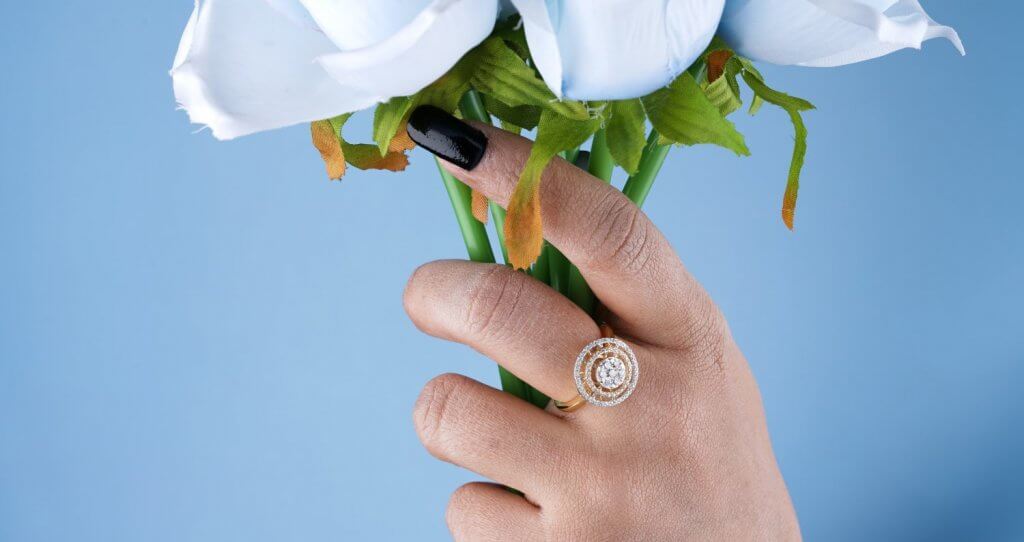
Shape
As we said before, shape is the first thing that anyone will notice, as well as size. A diamond’s shape can totally transform even the simplest ring design. Consider the difference between a soft and romantic Oval solitaire, and the edgier, more unusual Marquise, for instance.
Here’s what everyone else is buying:
- The Most Important Diamond Shape is Still the Round Brilliant
The design of Round Brilliant diamonds that we know and love today was finalized in the early 1920s, although Round diamonds had been around for a long, long time before that.
The Round Brilliant has represented the most popular choice pretty much from that point onward. Until some other shapes, which tend to come in and out of style every few years or generations, the Round Brilliant has been a classic for over a century. Its popularity likely stems from its versatile and timeless silhouette but, most importantly…
- The Round Brilliant Sparkles More than Any Other Shape
And sparkle (also referred to as light performance) Is certainly another priority for most shoppers.
- The Least Popular Shapes are the Heart and Marquise
Both represent around 2% of diamond engagement rings sold in the US.
The Heart cut is a tricky customer. For starters, it’s difficult to get perfect, which means that it’s all too easy for these diamonds to wind up looking too wide, too long, and narrow, or asymmetrical. In the US, it’s also seen as more of a ‘gimmick’. Other shapes like the Round, Oval, and Emerald feature very basic shapes, whereas the Heart’s obvious romantic connotations are less likely to withstand the test of time – or even a single trend cycle.
The Marquise cut has a great story behind it, and it’s a lot more versatile than the Heart. It often loses out to the Oval or Pear cuts, however, since both offer a similar shape without those two vulnerable points at either end, but it’s currently seeing a resurgence of interest from modern brides and grooms.
Origin
It’s a great sign that more and more shoppers are actively pursuing information about the origins of the diamonds they look at – and that more and more jewelry stores are practicing full transparency around their sourcing methods. With diamonds originating from so many different countries around the world, it’s vital we understand the path ours followed to reach us.
- The World’s Largest Producer of Rough Diamond (Per Carat) is Russia.
The country currently has 12 open pit mines. The overwhelming majority of Russia’s mining efforts are overseen by the mining group ALROSA, which ensures high standards are met for safety, wellbeing, pay, and efforts to minimize their impact on the environment. You can read more about Russian diamonds here.
- Africa’s Largest Producer of Diamonds is Botswana…
The country is rich in natural deposits, and, as of 2020, had exported approximately 310 million carats’ worth of diamond. This makes it the second largest producer of natural diamond in the world, and a major hub for the global industry, given how many diamonds are sorted there.
- …And the Mining Industry Generates Around 35% of the Country’s GDP
Thanks to a highly successful collaborative approach from the Botswanan government and the De Beers mining group, Botswana’s diamond industry has been able to go from strength to strength over the years. From the mining operations themselves to a major sorting facility operated by De Beers, the industry creates livelihoods for countless men and women across the country.
- Since its Introduction, The Kimberley Process has Ended the Production of More than 99% of Blood Diamonds
Since 2003, countries across the world have been united against the issue of diamonds mined and sold to fund rebellion movements and bloody conflict. While, a few decades ago, the industry was being overwhelmed by the relentless flow of diamonds mined in these conditions, it is now thought to have been minimized to represent just 0.2% of diamonds mined today.
It’s also easier than ever for jewelers and vendors to ensure the safe and ethical origins of their diamonds and, as a result, for shoppers to have faith in the industry.
You can read our full guide to the Kimberley Process to find out more.
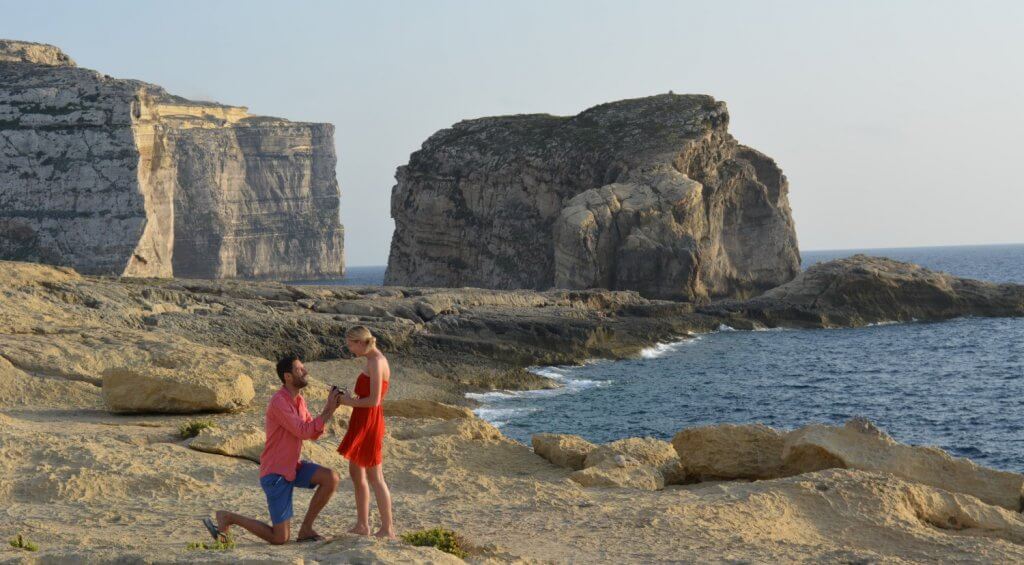
The Proposal
It’s not all about the diamond – although we’re pretty confident it’s mostly about the diamond. Here are the latest stats on the proposals themselves, in case you were fixating too much on the ring, and not enough on the moment itself…
- The Most Popular Month for Getting Engaged is December
Whether it’s the romance of the holiday season, or just a great way to usher in a brand new year – and a brand new stage of your journey together, more Americans are popping the question (and saying yes) than in any other month of the year.
- Some Estimates State that One in Every 500 Proposals Takes Place at Disneyland
If there was ever a way to make the most magical place on earth that bit more special, we’re guessing a sparkling diamond would clinch the deal for most people. The good thing is that, for the right person, Disneyland proposals will never get old. From getting the dreamy shot in front of Cinderella’s castle, to doing it in front of the entire cast of Fantasia, there are plenty of options for any soon-to-be bride or groom.
- In 2017, The Knot Found that, on Average, it Takes 4.4 Months to Plan a Proposal
Whether that sounds like a dauntingly long time to you, or nothing more than the blink of an eye will depend on the type of person you are. We’re all for a spontaneous, words-before-thoughts kind of proposal – particularly if you’re lucky enough to have the ring to hand – but, at the same time, we’re always eager to hear every little detail of a perfectly engineered moment.
- Men are More Likely to be Impressed by Valentine’s Day Proposals than Women
So, if we’re going with the general consensus, that’s a ‘No’ to Heart-shaped diamond rings, and a pretty tepid response to a proposal on the most romantic day of the year. In other words, unless you know your partner well enough to take the plunge, let the romance of a proposal speak for itself, and avoid any gimmicks or overly-obvious choices.
Life – and particularly love – isn’t all about keeping up with the Joneses, but we can certainly see a lot of value in knowing what numbers define the industry, what the general expectations are, and what sort of path you can expect to take as you move from planning to popping the question. Keep these facts and statistics in mind while you continue on your search for an engagement ring.

Mar 12, 2022 By Willyou.net
Upgrade Your Love: What is a Diamond Upgrade?
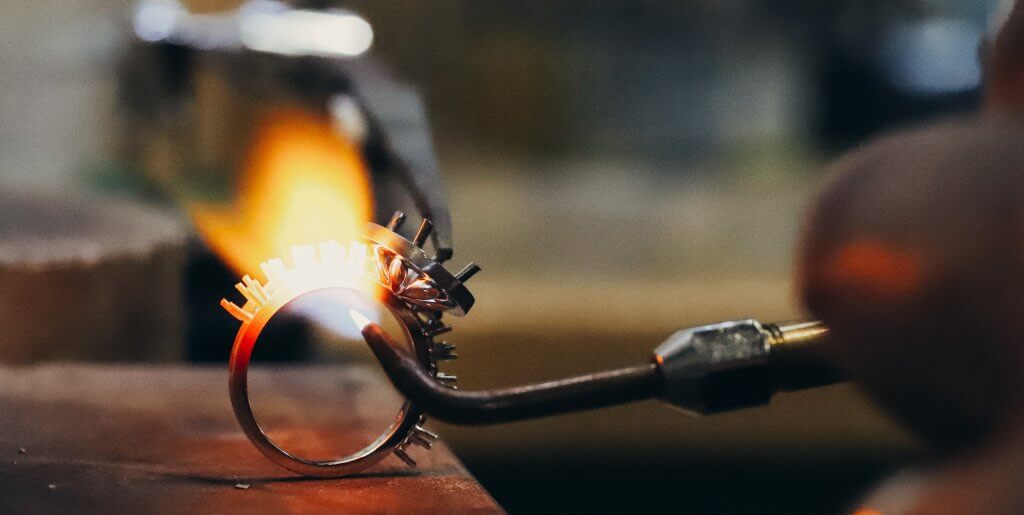
Nov 14, 2021 By Willyou.net
Palladium Jewelry: What You Need to Know
